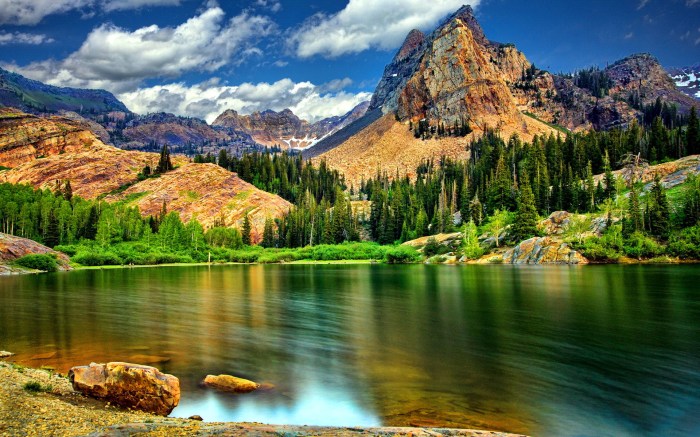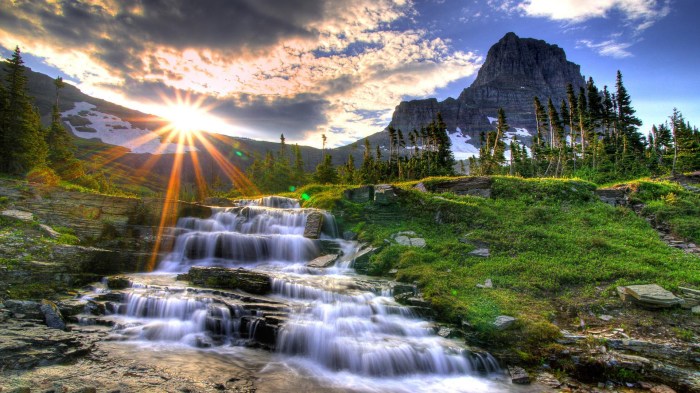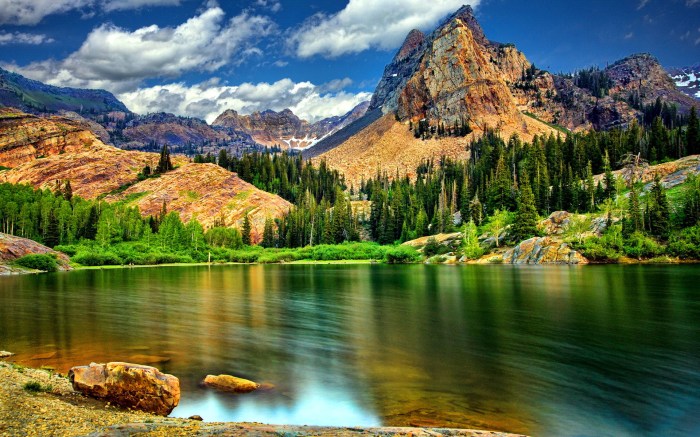Best time to visit Sardinia sets the stage for this enthralling narrative, offering readers a glimpse into the perfect moment to experience the island’s diverse charms. From the vibrant festivals and bustling crowds to the optimal weather for outdoor adventures, this guide will unravel the secrets to planning your unforgettable Sardinian getaway. This comprehensive exploration delves into the ideal time for various activities, considering weather patterns, tourist volume, festivals, and even transportation factors to help you make the most of your Sardinian experience.
We’ll dissect the seasonal weather patterns across Sardinia’s diverse landscape, comparing the north and south. Understanding the average temperatures, rainfall, and sunshine hours for each season is key. We’ll also analyze the tourist crowds, highlighting the busiest and slowest periods, to help you avoid the throngs or seize the quiet moments. Moreover, we’ll explore the vibrant festivals and events throughout the year, providing insights into their significance and impact on the island’s atmosphere.
Seasonal Weather Patterns in Sardinia
Sardinia’s Mediterranean climate offers a pleasant experience year-round, but the best time to visit depends heavily on your preferences. Understanding the seasonal weather patterns is key to planning an unforgettable trip. The island’s diverse geography, from the mountainous north to the sun-drenched south, influences the experience in each region.
Monthly Weather Overview
Sardinia’s weather is generally mild, with sunny days and warm temperatures. However, the specific conditions vary significantly across the seasons and between the northern and southern parts of the island. The data below provides a general overview of average temperatures, rainfall, and sunshine hours across the different months, enabling you to make informed decisions about your trip.
| Month | Average Temperature (°C) | Rainfall (mm) | Sunshine Hours |
|---|---|---|---|
| January | 10-12 | 50-70 | 6-8 |
| February | 11-13 | 40-60 | 7-9 |
| March | 13-15 | 60-80 | 8-10 |
| April | 15-18 | 50-70 | 9-11 |
| May | 18-22 | 30-50 | 10-12 |
| June | 22-26 | 10-30 | 12-14 |
| July | 26-30 | 5-20 | 13-15 |
| August | 27-31 | 5-15 | 12-14 |
| September | 25-28 | 20-40 | 11-13 |
| October | 20-24 | 40-60 | 9-11 |
| November | 16-19 | 60-80 | 7-9 |
| December | 12-15 | 60-80 | 6-8 |
Regional Variations
The northern and southern regions of Sardinia exhibit some variations in weather patterns. The mountainous terrain in the north often leads to cooler temperatures and slightly higher rainfall compared to the flatter, more exposed south. Coastal areas generally experience milder conditions than inland regions.
Crowds and Tourist Activity
Sardinia’s beauty draws visitors year-round, but the experience varies significantly depending on the time of year. Understanding the tourist volume and activity levels is key to planning a trip that balances enjoyment with manageable crowds. From bustling ports to tranquil beaches, the impact of tourism fluctuates dramatically across the island.The island’s popularity peaks during the summer months, when many European tourists flock to the shores.
Conversely, the shoulder seasons and winter offer a more intimate and relaxed experience for those seeking fewer crowds and lower prices. Knowing when to visit can greatly influence the overall quality of your Sardinian adventure.
Typical Tourist Volume by Month
The volume of tourists in Sardinia fluctuates significantly throughout the year. Summer months are consistently the busiest, with tourists seeking sun, sea, and relaxation. Conversely, the shoulder seasons and winter periods experience fewer visitors, offering a more tranquil and intimate experience.
| Month | Estimated Tourist Numbers (per day/week, approximate) | Level of Activity in Popular Destinations |
|---|---|---|
| June | 50,000 – 100,000 per day (depending on the specific week) | Beaches and towns are moderately busy, with a balance between tranquility and activity. |
| July | 100,000 – 150,000 per day (depending on the specific week) | Popular destinations like Cagliari, Alghero, and Costa Smeralda experience peak activity, with high tourist density. |
| August | 150,000 – 200,000 per day (depending on the specific week) | Maximum tourist influx; high demand for accommodations and services. Expect significant crowds at popular beaches and attractions. |
| September | 80,000 – 120,000 per day (depending on the specific week) | Tourist numbers start to decline, but beaches and towns still experience moderate activity. |
| October | 20,000 – 40,000 per day (depending on the specific week) | Lower tourist numbers; fewer crowds, ideal for enjoying the island’s beauty without the summer rush. |
| November – April | 5,000 – 15,000 per day (depending on the specific week) | Low tourist volume; ideal for those seeking peace and quiet. |
Impact of Crowds on Specific Areas
Large tourist numbers can significantly impact specific areas. Popular beaches, like those on the Costa Smeralda, can become exceptionally crowded during peak season, requiring careful planning to find less congested areas. Similarly, popular towns and historical sites experience increased crowds, potentially impacting the local atmosphere.
“Understanding the seasonal variations in tourist numbers can help visitors plan their trips strategically and avoid the most congested periods.”
Comparison of Busiest and Slowest Periods
The busiest period for tourism in Sardinia typically falls between June and August, with the highest concentration of tourists occurring in July and August. Conversely, the slowest period for tourism in Sardinia is generally from November to April, with the lowest number of visitors during the winter months. This difference in tourist volume creates a stark contrast in the experience for visitors.
Spring is generally the best time to visit Sardinia for pleasant weather and fewer crowds. However, if you’re planning a trip around the time of the Naples independent shops’ best season, you might consider exploring the hidden gems of best independent shops naples italy while you’re in the area. It’s a great way to add another layer to your Sardinian adventure, and you can still enjoy the beautiful island during its peak season.
Planning a trip outside of these peak seasons can offer a more intimate and less crowded experience.
Festivals and Events
Sardinia, a land steeped in history and vibrant culture, comes alive with a kaleidoscope of festivals throughout the year. These events, ranging from ancient traditions to modern celebrations, draw both locals and tourists alike, significantly impacting the island’s atmosphere and contributing to its unique charm. From boisterous processions to intimate musical performances, Sardinia’s festivals offer a captivating glimpse into the heart of Sardinian life.
Major Festivals and Events
Sardinia boasts a rich tapestry of festivals, each with its own unique character and significance. These events, often rooted in ancient rituals and customs, provide a window into the island’s history and heritage. Their impact on tourism is substantial, with many festivals attracting large crowds and contributing to the vibrant atmosphere of the island throughout the year.
Notable Sardinian Festivals
| Event Name | Date | Location | Description |
|---|---|---|---|
| Feast of Saint Anthony | Mid-January | Various villages | A significant religious celebration, marked by processions, prayers, and communal feasts. The atmosphere is devout and festive, often drawing large crowds and contributing to a sense of community. |
| Easter Celebrations | March/April | Various churches and towns | Easter is observed with traditional religious ceremonies, processions, and often with music, dancing, and communal feasts, marking a time of spiritual reflection and celebration. |
| Assunta | August 15th | Various churches and towns | This major religious festival, celebrating the Assumption of Mary, involves elaborate processions, prayers, and feasts, creating a vibrant atmosphere and contributing to the festive summer spirit. |
| Sardinian Music Festivals | Throughout the year | Various locations | Sardinia is home to numerous music festivals featuring traditional Sardinian music and dance. These festivals offer a platform for preserving and showcasing local musical heritage, drawing both local and international music enthusiasts. |
| Sardinian Folklore Festivals | Throughout the year | Various locations | These festivals showcase traditional Sardinian customs, costumes, and crafts, providing a glimpse into the island’s rich cultural heritage. |
| Agusta Festival | August | Various locations | The Agusta Festival, in various locations, often involves traditional dances and music. It represents a lively celebration, attracting tourists interested in the island’s traditions. |
Impact on Tourism
These festivals are a key draw for tourists, particularly those interested in cultural experiences. The vibrant atmosphere, often involving music, dance, and processions, creates an unforgettable experience for visitors. The presence of these events can significantly increase tourist numbers during specific periods, making them a crucial component of Sardinia’s tourism industry. The festivals highlight the island’s unique character, drawing attention to its rich traditions and heritage.
Specific Activities and Experiences: Best Time To Visit Sardinia

Sardinia’s diverse landscapes and climate offer a wealth of experiences throughout the year. Understanding the best time to pursue specific activities is key to maximizing your trip. From sun-drenched beaches to rugged mountain trails, each season presents unique opportunities. Knowing the optimal period for different pursuits ensures you enjoy the island to its fullest.The ideal time to visit Sardinia depends largely on your priorities.
Planning your Sardinian getaway? Spring and fall offer the perfect balance of pleasant weather and fewer crowds, making it ideal for exploring the island’s hidden gems. However, if you’re looking for a more vibrant, yet less tourist-trafficked experience, consider visiting during the shoulder seasons. For a glimpse into how to navigate the typical tourist traps, check out this insightful article about Times Square in NYC – times square nyc top tourist letdown how to visit local – and apply similar strategies to your Sardinian adventure.
Ultimately, the best time to visit Sardinia depends on your priorities and what you’re hoping to experience.
Are you seeking the bustling energy of summer crowds or the tranquil solitude of spring? Understanding the weather patterns, crowd levels, and the nuances of each season is crucial to tailoring your trip to your interests.
Hiking in Sardinia
Hiking in Sardinia is rewarding, but the terrain and weather conditions play a significant role. Spring and autumn offer pleasant temperatures and fewer crowds, making them ideal for exploring the island’s many trails. Summer can be extremely hot and dry, while winter often brings rain and potentially icy conditions. Consider these factors when choosing your hiking itinerary.
- Spring (April-May): Temperatures are generally mild, ideal for extended hikes. The weather is usually dry, and wildflowers bloom, enhancing the scenic beauty. Expect fewer crowds than summer.
- Summer (June-August): Extreme heat and potential for drought can make hiking strenuous and uncomfortable. If you choose to hike in the summer, prioritize early mornings or late evenings for cooler temperatures. Be sure to carry plenty of water.
- Autumn (September-October): Autumn offers pleasant weather, with cooler temperatures and fewer crowds. The landscape is often vibrant with the colors of the season, adding to the experience.
- Winter (November-March): Winter weather can be unpredictable, with rain and potential for snow in higher elevations. Hiking might be limited to specific trails and conditions.
Swimming and Beach Activities
Sardinia’s stunning coastline is a prime spot for water sports and beach relaxation. The ideal time for swimming and beach activities largely depends on the water temperature and the intensity of the sun.
- Summer (June-August): The Mediterranean Sea reaches its warmest temperatures, making it perfect for swimming and sunbathing. Expect high levels of tourist activity and crowded beaches during this period. Water sports are at their peak.
- Spring (April-May): Water temperatures are rising, though the weather can be unpredictable. Beaches are less crowded compared to summer, offering a more relaxed experience.
- Autumn (September-October): The water remains warm enough for swimming, and the crowds start to thin. The weather is pleasant, and the beaches are less crowded than during the peak summer season. This period often presents the best balance of pleasant weather and fewer crowds.
- Winter (November-March): The water is typically too cold for swimming for most people, though some brave souls may enjoy the experience.
Exploring Historical Sites
Sardinia boasts a rich history, with numerous archaeological sites and historical towns. Visiting these locations can be enjoyable in any season, although the weather and crowds may influence the experience.
- Spring and Autumn: Pleasant temperatures and fewer crowds make these seasons ideal for exploring historical sites without the discomfort of intense heat or cold.
- Summer: While the weather is great for outdoor activities, the high temperatures and larger crowds might make visiting historical sites less appealing to some.
- Winter: The weather can be unpredictable, with rain or cold temperatures. However, fewer crowds might provide a more tranquil atmosphere for those who enjoy exploring during the colder months.
Best Time to Visit Different Regions
| Region | Best Time for Hiking | Best Time for Swimming | Best Time for Historical Sites |
|---|---|---|---|
| Costa Smeralda | Spring/Autumn | Summer | Spring/Autumn |
| Barumini | Spring/Autumn | Summer | Year-round |
| Nuoro | Spring/Autumn | Summer | Year-round |
Note: This table provides a general guideline. Specific conditions and preferences may vary.
Accommodation and Costs
Sardinia’s charm comes at a price, and the cost of accommodation varies significantly depending on the time of year. Understanding these fluctuations is crucial for planning a budget-friendly trip or maximizing your experience. From bustling tourist hotspots to secluded seaside villages, the range of accommodation options and their associated prices can differ considerably.Accommodation costs in Sardinia are heavily influenced by the seasonality of tourism.
Peak season, typically the summer months, sees a surge in demand, driving up prices for all types of accommodation. Conversely, the shoulder seasons and winter months offer more affordable options, making them attractive for budget-conscious travelers. Understanding these seasonal variations allows for better financial planning and the potential to find excellent deals.
Seasonal Accommodation Price Fluctuations
The cost of accommodation in Sardinia varies dramatically throughout the year. Summer months, particularly July and August, are peak season, with hotels and apartments commanding higher rates. Shoulder seasons, spring and autumn, offer a more affordable alternative, while winter offers the lowest prices. This pattern is consistent across popular areas.
Comparison of Accommodation Types
Hotels, apartments, and other accommodation types demonstrate different price sensitivities to seasonal changes. Luxury hotels often experience the most significant price increases during peak seasons. Apartments and vacation rentals, while sometimes offering more space and flexibility, also exhibit seasonal price fluctuations, though potentially less pronounced than hotels. This means planning ahead and considering your needs is vital for securing the best value.
Typical Accommodation Costs
The average cost for accommodation in popular areas during peak season can range from €150 to €500+ per night for a hotel room. Apartments and vacation rentals might fall within a range of €100 to €300+ per night. Off-peak seasons, on the other hand, offer significant discounts. For example, a hotel room in a popular coastal town might drop to €80-€200 per night during the shoulder seasons.
This price difference reflects the lower demand.
Impact of Seasonal Fluctuations on Trip Costs
Seasonal fluctuations significantly impact the overall cost of a Sardinian trip. Booking accommodation during peak season can easily double or even triple the cost compared to shoulder or off-peak seasons. Careful consideration of your travel dates and willingness to potentially adjust your itinerary can lead to considerable savings.
Accommodation Cost Table
| Accommodation Type | Average Price per Night (Euro) | Season |
|---|---|---|
| Hotel (Luxury) | €250 – €500+ | July/August (Peak) |
| Hotel (Mid-range) | €150 – €300 | July/August (Peak) |
| Apartment/Rental | €100 – €250 | July/August (Peak) |
| Hotel (Mid-range) | €80 – €150 | May/June (Shoulder) |
| Apartment/Rental | €70 – €180 | May/June (Shoulder) |
Transportation Considerations

Getting around Sardinia can be a delightful experience, blending the charm of local buses and ferries with the convenience of rental cars. The best method depends heavily on your travel style, the time of year, and your destinations. Whether you prefer exploring the island’s diverse landscapes at your own pace or embracing the island’s efficient public transport, understanding the nuances of Sardinian transportation is key to a smooth and enjoyable trip.Sardinia’s transportation network is well-developed, though its efficiency varies based on the season and the specific region.
Summer months, naturally, see a surge in tourists, leading to potentially higher costs and longer travel times for ferries. Conversely, the off-season offers more affordable and flexible travel options, though some routes or services might be less frequent. Planning ahead and being aware of seasonal fluctuations will help you make informed choices.
Accessibility and Convenience of Transportation
Sardinia boasts a network of buses connecting major towns and cities, although coverage can be limited in rural areas. Ferries are crucial for island hopping, and rental cars offer the freedom to explore at your own pace. The accessibility of these options varies significantly based on the season. During peak season, ferries and rental cars are in high demand, which can affect pricing and availability.
Travel Times, Costs, and Availability
Public transport is generally affordable, but travel times can be longer compared to a rental car. Ferries offer a scenic alternative, with fares varying depending on the season, the route, and the type of ferry. Rental cars provide the most flexibility, but costs increase during peak seasons. Be sure to check the schedules and fares in advance to avoid surprises.
For example, a ferry trip between Cagliari and Olbia in peak season could cost twice as much as during the shoulder season.
Planning a trip to Sardinia? Spring and fall offer the perfect blend of pleasant weather and fewer crowds. While you’re researching the best time to visit, you might also be interested in exploring delicious meat-free options. For a comprehensive guide to Amsterdam’s plant-based culinary scene, check out meat free munching herbivores guide amsterdam. This will help you discover hidden gems and fantastic restaurants for your Sardinia adventure, too!
Potential Delays or Disruptions
Weather conditions can significantly impact transportation on Sardinia. Heavy rain or strong winds can cause delays or even cancellations for ferries and buses. Road closures due to storms are also a possibility, especially during the wet season. Checking weather forecasts and transportation updates before you travel is crucial to avoid any surprises.
Best Methods of Transportation for Different Travel Plans
For those seeking a budget-friendly and scenic way to explore the island, buses and ferries are ideal. For travelers wanting maximum flexibility and independence, a rental car is the preferred choice. The best approach depends on the duration of your stay and your preferred mode of travel. For example, a 7-day trip focusing on exploring different coastal towns would benefit from a combination of ferries and rental cars.
Transportation Options, Costs, and Travel Times
| Transportation | Estimated Cost (EUR) | Typical Travel Time |
|---|---|---|
| Local Bus (Cagliari to Oristano) | 10-20 | 2-3 hours |
| Ferry (Olbia to La Maddalena) | 30-60 (depending on class) | 1-2 hours |
| Rental Car (week-long) | 200-400 (depending on car type and season) | Variable, depends on distance |
Note: Costs are estimates and can vary based on season, booking time, and specific routes.
Cultural and Historical Considerations
Sardinia’s rich tapestry of history and culture is woven throughout its diverse landscapes. Understanding the island’s vibrant festivals and events, and how they shift seasonally, can significantly enhance your travel experience. From ancient traditions to modern celebrations, Sardinia offers a unique blend of cultural immersion for visitors.The island’s cultural scene isn’t static; it pulses with life and activity, especially during specific times of year.
The best time to experience a particular festival or historical site might differ depending on the event itself. A summer festival celebrating local traditions will naturally be more prominent during the warmer months, whereas a winter festival might highlight the resilience of the Sardinian people and their culture.
Influence of Festivals on the Best Time to Visit
Sardinian festivals are integral to the island’s cultural identity, often marking agricultural cycles, religious holidays, or commemorating historical events. These celebrations, whether ancient or modern, shape the island’s atmosphere and contribute significantly to the overall experience. For example, the Festa di San Giovanni, a major religious celebration, typically takes place in June, making it a perfect time for those interested in religious traditions and local customs.
Seasonal Variations in Cultural Atmosphere, Best time to visit sardinia
The atmosphere and experiences during different seasons vary significantly, reflecting the island’s agricultural rhythm and the ebb and flow of cultural events. Spring, with its blossoming flowers and renewed energy, often witnesses the start of many agricultural festivals, and the revival of traditional music and dance. Summer, with its long days and warm nights, brings a surge of vibrant festivals and celebrations, making it a time for outdoor gatherings and vibrant social life.
Autumn, marked by the harvest season, showcases the region’s agricultural heritage through festivals and fairs. Winter, often associated with quieter periods, can also offer unique experiences, like the ancient Christmas traditions.
Best Time for Specific Cultural or Historical Interests
The best time to visit for a specific cultural or historical interest is directly tied to the schedule of events. For example, those interested in ancient Roman ruins might find the spring or autumn months ideal, as these seasons offer pleasant weather and fewer crowds compared to the summer months. For those fascinated by traditional Sardinian music, the summer months often provide the most opportunities for live performances and cultural events.
Seasonal Variations in Cultural Activities
Cultural activities in Sardinia are influenced by the season. Spring and summer often see an increase in outdoor performances, markets, and celebrations. Autumn and winter can feature more intimate events, showcasing the island’s unique traditions and local artistry. A significant aspect of this dynamic is the agricultural calendar, which guides many of the island’s festivals and events.
For instance, the harvest festivals are primarily held in autumn.
Table of Cultural Events and Best Time to Experience Them
| Cultural Event | Best Time to Experience | Description |
|---|---|---|
| Festa di San Giovanni | June | Major religious celebration with vibrant festivities. |
| Harvest Festivals | Autumn | Celebrations marking the end of the agricultural cycle. |
| Ancient Roman Ruins Visits | Spring/Autumn | Pleasant weather and fewer crowds compared to summer. |
| Traditional Sardinian Music Performances | Summer | More opportunities for live performances and cultural events. |
Closure
Ultimately, the best time to visit Sardinia hinges on your priorities. Whether you crave sun-drenched beaches, vibrant cultural experiences, or challenging hikes, this guide equips you with the knowledge to choose the perfect season. From the bustling summer months to the serene shoulder seasons, Sardinia offers something for every traveler. The key is understanding the interplay of weather, crowds, festivals, and your personal preferences.
Armed with this information, you can plan a trip that caters to your desires, resulting in a memorable Sardinian adventure.




